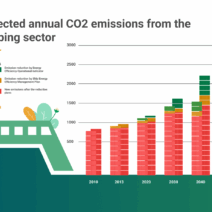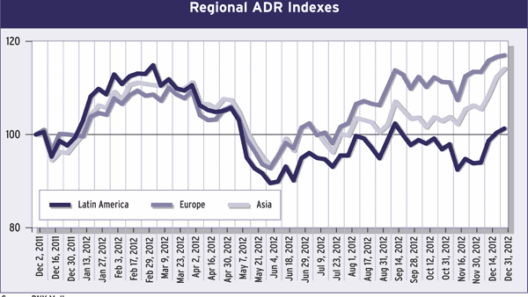As humanity grapples with the existential threat of climate change, the proverbial sword of Damocles hangs perilously over our heads. Among the many strategies to mitigate global warming, Carbon Capture and Storage (CCS) emerges as a potential game-changer, akin to a technological phoenix rising from the ashes of fossil fuel dependency. This innovative method, designed to trap carbon dioxide emissions before they escape into the atmosphere, promises to be a vital cornerstone in our endeavor to stabilize the planet’s climate. But how exactly does CCS function, and why is it a critical ally in the fight against global warming?
At its core, CCS can be likened to a diligent janitor, sweeping away the toxic remnants of industrial activity. The technology captures carbon dioxide emissions produced from the use of fossil fuels in electricity generation and industrial processes. Once captured, the CO2 is transported—usually via pipelines—to a storage site where it is injected underground into geological formations that can securely trap it for millennia. This process not only curbs immediate emissions but also lays the groundwork for a cleaner energy future.
The allure of CCS lies in its dual capability to keep the economy buoyant while simultaneously tackling climate change. It provides a crucial bridge to a low-carbon future, allowing for continued reliance on fossil fuels while the world transitions to renewable energy sources, such as solar, wind, and hydroelectric power. This balance is essential because abruptly halting fossil fuel production would have dire economic repercussions. Just as a seasoned captain navigates through tumultuous seas, CCS offers a well-charted course through the churning waters of energy transition.
The mechanics of CCS unfold in three essential stages: capture, transport, and storage. The capture phase involves technologies such as pre-combustion capture, post-combustion capture, and oxy-fuel combustion, each a distinctive strategy tailored to intercept CO2 at different phases of fuel utilization. In pre-combustion capture, the fossil fuel is converted into a mixture of hydrogen and CO2 before combustion, making it easier to separate the greenhouse gas. Conversely, post-combustion capture captures CO2 from flue gases after combustion has occurred, allowing for the continued use of existing infrastructure.
Once captured, the carbon dioxide must be transported to a storage site. This transport typically involves pipeline systems, which can reach hundreds of miles in length. As a vital cog in the CCS machinery, the pipeline infrastructure is akin to the tentacles of an octopus, extending its reach to safely convey captured carbon to secure storage locations. These facilities are often situated in geologically stable regions, such as depleted oil and gas fields or deep saline aquifers, where the geological characteristics ensure safe containment of CO2.
The final stage, storage, is where CCS truly shines. This phase is critical to the efficacy of the entire process. Geological formations hold immense potential, capable of storing billions of tons of carbon dioxide over extensive periods. The abatement of CO2 from the atmosphere through geologic sequestration acts like a sponge, soaking up excess carbon from the air and preventing it from contributing to the greenhouse effect. It is an elegant solution to a monumental problem, one that requires a careful balance of science, engineering, and environmental stewardship.
Despite its promise, the implementation of CCS is not without challenges. Financial viability remains a significant hurdle; although the costs of capturing and storing carbon have decreased, they still require substantial investment and infrastructure development. Additionally, regulatory frameworks and public perception play significant roles in the deployment of CCS technologies. Just as a tree must be well-rooted to withstand howling winds, CCS requires robust policy support to flourish.
Furthermore, while CCS presents a potential pathway to mitigating climate change, it is not intended as a panacea. The overarching ambition must still be to slash greenhouse gas emissions at their source. Critics argue that an over-reliance on CCS can create a false sense of security, inadvertently delaying the transition toward renewable energy. Balancing this dependency is critical; employing CCS must coexist harmoniously with the broader adoption of clean energy solutions, creating a synergistic relationship rather than a reliance on a single technological fix.
Yet, as the world grapples with the urgent necessity to limit global warming to well below 2 degrees Celsius, CCS stands as a beacon of hope. It offers a pragmatic solution to a complex problem, marrying technological advancements with ecological responsibility. There are numerous projects worldwide showcasing the viability of CCS, highlighting its potential to contribute substantially to emissions reductions. Nations aiming for ambitious climate targets cannot afford to overlook this pivotal technology.
In conclusion, CCS embodies a multifaceted approach to combatting global warming, serving as an indispensable tool in our climate arsenal. As society escalates its battle against climate change, carbon capture holds the key to unlocking a sustainable future. Like an artist wielding a brush, carving landscapes of hope on the canvas of the atmosphere, CCS weaves together efforts to stabilize our climate with the promise of green innovation. The road ahead will be fraught with complexity and challenges, yet with the resolute implementation of carbon capture technologies, there lies a realistic pathway to safeguard our planet for generations to come.







